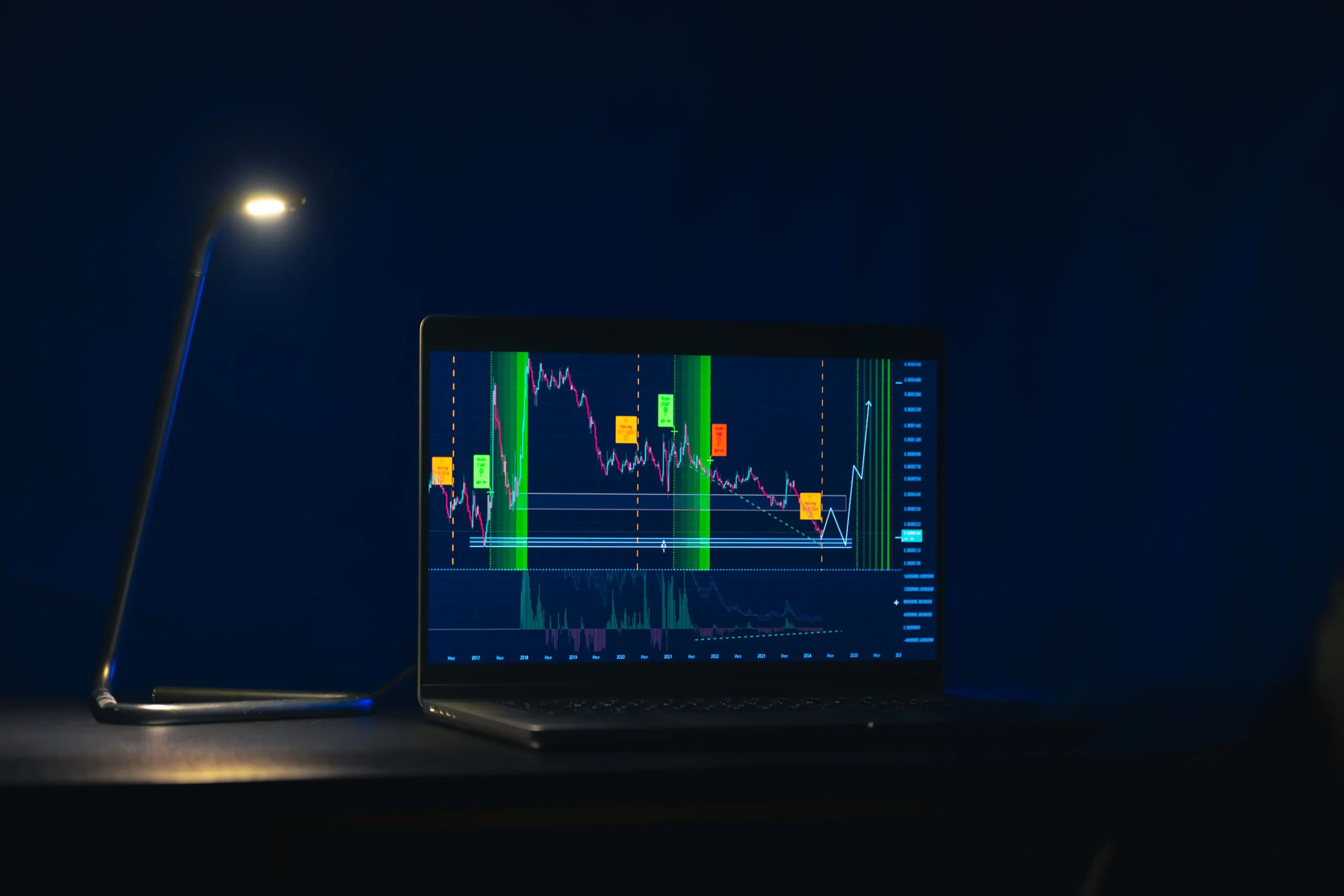Swing trade vs scalping comes down to three factors: your available time, capital size, and risk tolerance. Swing trading suits busy professionals seeking 1-3% returns over 2-10 days with moderate risk, while scalping targets micro gains of 0.1-0.5% in seconds to minutes but demands full-time commitment and higher capital.
The difference matters more than most realize. In markets moving $7.5 trillion daily, choosing the wrong approach doesn’t just waste time—it destroys accounts. Most retail traders learn this too late, with 74-89% losing money according to ESMA broker disclosures. Your strategy choice ultimately determines whether you join the profitable minority or become another cautionary tale.
I’ve watched countless traders jump into scalping because it looks exciting, only to burn out within months. Meanwhile, others dismiss swing trading as “too slow” and miss consistent profit opportunities. The truth? Both work, but only when matched to your actual circumstances rather than your trading fantasies.
TL;DR Summary
- Swing Trading: Hold positions 2-10 days, target 1-3% profit targets, requires 1-2 hours daily, minimum $5,000 capital
- Scalping: Hold positions seconds to minutes, target 0.1-0.5% micro gains trading, requires 6-8 hours daily, minimum $10,000 capital
- Decision factors: Time availability, capital size, risk tolerance, and experience level
- Bottom line: Most successful traders I know started with swing trading, then either stuck with it or gradually incorporated scalping elements
What Is Swing Trading?

Swing trading captures price movements over 2-10 days by riding market momentum. You enter positions during pullbacks in trending markets, hold through minor fluctuations, then exit when momentum shifts or targets hit.
I like to think of it as fishing with patience. You’re not casting every five minutes hoping for immediate bites. Instead, you study the water, choose the right spot, cast your line, and wait for the fish to come to you. Some days you catch nothing. Other days, you land the big one that makes the wait worthwhile.
Pros and Cons of Swing Trading
Advantages that actually matter:
- Part-time friendly—analyze markets during lunch breaks, execute after work
- Lower stress than day trading—no need to chain yourself to screens
- Higher profit potential per trade—realistic targets of 1-3% versus scalping’s measly 0.1-0.5%
- Actual work-life balance—positions manage themselves once you’ve done the analysis
The downsides nobody mentions upfront:
- Overnight risk bites hard—gap openings can trigger stops before you’re awake
- Patience becomes painful—quality setups might take weeks to materialize
- Capital intensive per position—you need $5,000+ minimum to diversify properly
Here’s reality: You spot EURUSD trending up at 1.0950, enter on a pullback to 1.0920 with a 30-pip stop loss, targeting 1.1050 (130 pips). You’re risking $300 on a $10,000 account (3% risk). If successful, you pocket $1,300. The best trading indicators for these setups include RSI divergences and moving average bounces—but they only work when you understand market context.
Best Situations to Use Swing Trading
Swing trading excels during:
- Trending markets: Clear directional bias with 2-5% weekly moves
- Economic calendar gaps: Between major news events when market volatility settles
- Personal schedule constraints: When you work 9-5 and can’t monitor markets constantly
Perfect for software engineers, doctors, or consultants who want market exposure without quitting their day jobs. This short-term trading strategy works across different trading timeframes—check charts before work, set trades during lunch, review progress after dinner.
What Is Scalping?

Scalping extracts tiny profits from brief price fluctuations. You’re making 50-200+ trades daily, holding positions for seconds to minutes, capitalizing on bid-ask spread movements and momentum bursts.
It’s like being that person at the casino who wins $5 here, $3 there, and somehow walks away with meaningful money by the end of the night. Except instead of luck, you’re relying on speed, technology, and nerves of steel. The rush is addictive—until it isn’t.
Pros and Cons of Scalping
Let me be honest about what scalping actually feels like:
When it works:
- Instant gratification—you know if you’re wrong within minutes, not days
- Limited overnight exposure—you close everything before market close (smart move)
- High win rate potential—skilled scalpers achieve 60-80% winning trades (though “skilled” is doing heavy lifting here)
- Daily income possibility—steady flow of small profits, assuming you don’t blow up
When it doesn’t (which is often):
- Brutally time-intensive—expect 6-8 hours of intense screen time daily, minimum
- Stress levels through the roof—constant decision making under relentless pressure
- Technology becomes your lifeline—you need fast internet, low-latency execution, proper hosting
- Death by a thousand cuts—spreads and commissions accumulate like parking tickets
Real world example: Trading EURUSD with 0.1-pip spreads, targeting 2-3 pip moves. On a $50,000 account, you risk $50 per trade, targeting $150 profit. You need 100+ successful trades daily to generate meaningful income. Most traders using MT4 VPS hosting find the technology easier than the trading psychology aspects. The psychological demands will test every ounce of patience you thought you had.
When Scalping Works Best
Scalping thrives during:
- High liquidity periods: London/New York session overlap (8 AM – 12 PM EST)
- Economic announcements: First 15-30 minutes after NFP, Fed meetings
- Range-bound markets: When swing trading setups are scarce
Optimal for former day traders, retired professionals, or anyone treating trading as their primary income source. Demands technological infrastructure including reliable MT5 VPS hosting for uninterrupted execution.
Swing Trade vs Scalping: Key Differences
| Factor | Swing Trading | Scalping |
| Time Horizon | 2-10 days | Seconds to minutes |
| Trades per Day | 1-5 | 50-200+ |
| Profit per Trade | 1-3% | 0.1-0.5% |
| Required Capital | $5,000+ | $10,000+ |
| Daily Time Commitment | 1-2 hours | 6-8 hours |
| Stress Level | Moderate | Very High |
| Technology Requirements | Basic platform | Professional setup |
| Win Rate | 45-55% | 60-80% |
Here’s what this actually means in practice: Swing traders play chess while scalpers play speed chess blindfolded. Both require skill, but the mental demands are completely different.
Capital efficiency reality: A swing trader with $10,000 might risk $200 per trade targeting $600 profit (1:3 risk-to-reward ratio). A scalper with identical capital might risk $100 per trade targeting $150 profit (1:1.5 ratio) but execute 20 trades daily versus the swing trader’s maybe 3 weekly trades. Math works for both, execution doesn’t always.
Technology requirements create entirely different universes. Swing trading works fine with standard retail platforms—I’ve made profitable swing trades from my phone during airport layovers. Scalping demands professional-grade execution. Many crypto scalpers rely on specialized MT5 VPS setups to maintain their edge, because even a few milliseconds of latency can make the difference between profit and loss.
The US dollar’s dominance influences both approaches—88% of all forex trades involve USD according to the Bank for International Settlements, making USD pairs most suitable for either strategy. But scalping vs swing trading success ultimately depends on matching the approach to your life, not market statistics.
Which Trading Style Fits Your Personality?

Your lifestyle determines strategy success, but honest self-assessment hurts. Most traders pick strategies based on fantasy rather than reality.
For Busy Professionals
Choose swing trading if you:
- Work standard business hours without flexible breaks
- Can check markets twice daily (morning coffee, evening wind-down)
- Prefer strategic thinking over rapid-fire execution
- Want supplemental income without abandoning your career
Realistic routine: Check overnight developments at 7 AM over coffee, scan for setups during lunch break, review positions after work. Place orders Sunday evening for the coming week. Perfect for lawyers, engineers, or managers drowning in meetings who still want market exposure.
But here’s what nobody tells you—those “quick lunch break checks” turn into 45-minute analysis sessions that make you late for afternoon meetings.
For Full-Time Traders
Scalping suits you if you:
- Trade as primary income source (not hobby money)
- Thrive in fast-paced, high-intensity environments
- Have $25,000+ trading capital for pattern day trading compliance
- Can dedicate 6-8 hours daily to active trading without burning out
Income mathematics: Targeting $300 daily profit requires approximately 100 successful trades at $3 each, assuming 70% win rate. Monthly income potential: $6,000-8,000, but demands consistent execution and nerves of steel.
Many full-time traders blend approaches—using automated futures trading strategies during slow periods while manually scalping during high-volatility sessions. The smart ones admit that pure scalping eventually leads to burnout, so they diversify their methods. Understanding futures trading indicators becomes crucial for this hybrid approach.
For Beginners
Start with swing trading, despite scalping’s seductive promise of quick profits:
- Lower frequency reduces emotional pressure and learning costs
- More time to analyze mistakes without feeling rushed
- Less capital required for meaningful learning experiences
- Better work-life balance during the inevitably long learning phase
Beginners gravitate toward scalping because of the quick feedback loop—you know immediately if you’re right or wrong. But this amplifies learning costs exponentially. Every mistake costs money, and beginners make lots of mistakes very quickly. It’s like learning to drive in Formula 1.
Swing trading provides a structured learning environment with clear entry/exit rules and time to think before acting. The scalp trading vs swing trading learning curves differ dramatically—scalping requires 12-24 months to develop competency, assuming you survive the emotional gauntlet. Most don’t.
How to Choose Between Swing Trading and Scalping
Choose based on risk tolerance, time availability, and capital size. These three factors determine which strategy matches your circumstances—everything else is secondary noise.
Based on Risk Tolerance
Conservative approach: Swing trading with 1% risk per trade
- Example: $10,000 account, risk $100 per trade, target $300 profit
- Monthly trades: 8-12, potential monthly return: 3-6%
Aggressive approach: Scalping with high-frequency, low-risk trades
- Example: $10,000 account, risk $50 per trade, target $75 profit
- Daily trades: 50-100, potential daily return: 1-3%
Risk tolerance isn’t just about money—it’s about psychological comfort. Can you sleep with open positions? Do small losses bother you more than large ones? These questions matter more than the math, though most traders ignore this completely.
Based on Time Commitment
Limited time (1-2 hours daily): Swing trading becomes mandatory
- Pre-market analysis: 30 minutes
- Position management: 15 minutes at lunch
- Evening review: 30 minutes
Full-time availability (6-8 hours daily): Scalping becomes possible
- Market preparation: 1 hour
- Active trading: 6 hours (this will feel like 12)
- Daily review: 1 hour
Time commitment extends beyond trading hours. Scalping requires constant education about market microstructure and technology upgrades. Swing trading needs broader market analysis skills and infinite patience. Both demand more than you think.
Based on Capital Available
$5,000-15,000: Swing trading preferred
- Proper position sizing allows 3-5 simultaneous positions
- Adequate capital for stop losses without dangerous overleverage
$15,000+: Both strategies viable
- Scalping becomes practical with PDT rule compliance
- Swing trading allows larger position sizes for better diversification
Professional-level capital ($50,000+): Strategy choice becomes lifestyle preference rather than capital constraint.
Consider integrating futures trading strategies to optimize whichever approach you choose. Futures markets offer excellent opportunities for both styles, though they require additional education about contract specifications and margin requirements.
You might also explore Litecoin VPS solutions if crypto markets interest you—they often provide unique scalping opportunities during high-volatility periods. Understanding day trading vs swing trading differences helps determine which hosting solution matches your needs, if any.
Top Tools & Indicators for Each Strategy
Swing Trading Tools:
- RSI (14-period) for overbought/oversold conditions
- MACD for trend confirmation
- Moving averages (20, 50, 200) for support/resistance
Scalping Tools:
- Level II order book data
- 1-minute and tick charts
- Volume profile indicators
Both strategies benefit from understanding market microstructure. The best intraday strategy often combines elements from both approaches—using swing analysis for bias, scalping techniques for execution.
Conclusion
Swing trade vs scalping success depends on matching strategy to personal circumstances rather than chasing perceived profit potential. Swing trading offers sustainable part-time income for busy professionals, while scalping provides full-time income potential for dedicated traders with adequate capital and technology infrastructure.
The reality? Most successful traders I know started with one approach, learned it thoroughly, then gradually incorporated elements from the other. Pure scalpers often add swing positions during slow periods. Swing traders frequently use scalping techniques for better entry timing.
Choose based on available time, capital size, and risk tolerance—not on which sounds more exciting. Both strategies can generate significant returns when executed properly with appropriate risk management and realistic expectations. The key lies in honest self-assessment rather than wishful thinking.




One thought on “Swing Trade vs Scalping: What Works in 2025”
You nailed the reality check about scalping—it looks glamorous until you’re staring at charts all day for fractions of a percent. Matching your strategy to your actual lifestyle and risk threshold really is what separates long-term traders from short-term thrill seekers.